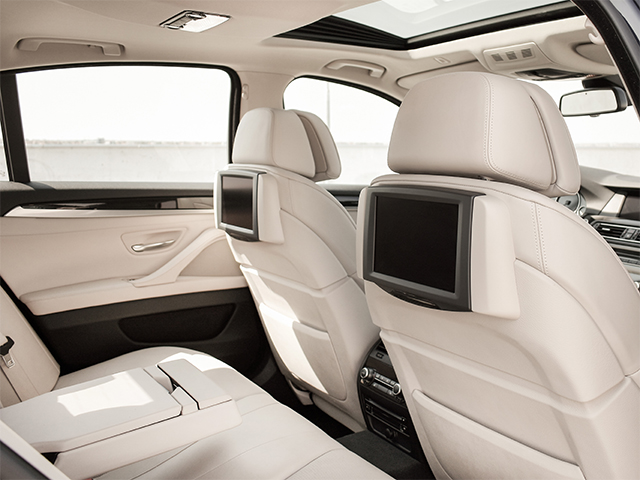Nappa, Annaline, Vegetable Tanned - Know The Leather Used in Your Cars

We have seen the usage of leather in bags, wallets, casings, shoes, jackets, jeans, belts, furniture, and even on wall decorations, but where do you think its quality is more appreciated than any other industry? Automobiles!
Leather has been a symbol of luxury from prehistoric times. Cave dwellers used raw animal hides as beds and clothing, and Kings used them for carpeting the floor. Besides, leathers have also been used in sword sheaths and gun holsters. When it comes to your car, you'd wish the leather to be classy, because it's something to show off; glorifies a car's interior like it is a goldmine. To be honest, some of the high-class leathers are equally rare and expensive. According to the world's biggest supplier of leather, GST-Seton AutoLeather, the demand for finest quality leathers has mounted in recent years so much so that meeting the orders has become an issue. Rolls-Royce, the luxury carmaker, is currently the sole procurer of its vegetable-tanned leather supply, which decorates the interior of Phantom. If you are going to buy your next ride after taking a satisfactory car background check, you should know one or two things about leather, especially if you are looking to adorn your carriage with high-class leather.
With so much said, let's have a look at the different types of leather used in cars, their processing, and manufacturing. Remember, more treatment means grading down leather's quality and value. Best leathers such as Aniline, Semi-aniline, and Vegetable-tanned have natural graining, which is not embossed.
Vegetable-tanned
Holding the top position in our list, it is a product crafted using organic materials and is reserved for high-end vehicles. The vegetable-tanned leather is a reserved category for Kings and Queens, fair enough to say you will be lucky just to have your hands stretched over it, let alone buying unless you are a millionaire yourself.
Aniline leather
It is the most natural-looking, soft-grained, and unique of all kinds. The makers secure it from animal hides of very selective farms, which maintain special care of cows and bulls, so the quality is not altered. The manufacturers preserve the surface texture by treating it with soluble dyes. There is no coating or pigmentation, but a thin film can be applied to protect against spoilage or soiling.
Semi-aniline leather
Just one level below aniline, this type is artificially treated with thin pigments and very light surface coats, rendering it more toughness. The processing includes stain-resistant paint, so it requires less care than aniline leather.
Pigmented Leather
If you are looking for reliability, this is undoubtedly the most imperishable material for interior decoration of your cars. It is densely pigmented and coated with polymers to shield it from external stress. Consequentially, makers can preserve its color for longer times and can delay the texture fading. The longevity depends on the thickness of coating, which varies, but makers keep it lower than 0.15 millimeters for quality standards. It also marks the legal limit in the UK, beyond which a product cannot be sold as leather.
Full-grain pigmented leather
The natural look of surface grain remains unchanged because the leather is not pre-processed before pigmentation or coating.
Corrected leather
As the name implies, their supply comes from low-quality producers with associated faults, like tearing, cuts, holes, etc., and manufacturers pre-process it for leveling before pigmentation or coating. Subsequently, decorative grain patterns are embossed onto the surface.
Nappa Leather
Nappa is probably the most tweeted-around and craved type, which is full-grain leather and makers treat it to the minimum to preserve its originality.
Finished split leather
Rawhide is split along its thickness (thus the name) to obtain twice the amount of Hide at the price of one. Later on, manufacturers apply pigmentation and polymer coating with embossed grainlines. Bear in mind that due to reduced thickness, it is more liable to deformation; therefore, you should care it accordingly.
Antique grain Leather
Just like ripped jeans, this leather is unevenly coated or post-processed by grazing to give it faded or paler look.
Pull-up leather
Also called waxy or oily pull-up, this leather is appealingly more refined but objectively rawer. It gives a special glossy effect when stretched.
Nubuck
The surface of aniline leather is lightly abraded to render it an excellent velvety finish. After razing, the grainy pattern may or may not be visible depending on the preference of the automaker.
Suede
It is a surface razed split leather to achieve fibery outlook, just like Nubuck. The difference is that it is cheaper and distinctively less fine-tuned.
Finally, you should be able to figure out that leathers that are more luxurious need more delicate handling. Additional treatment means further degradation of its quality. The natural appearance of the leather's surface is a precursor, which sets its standards. Last but not least, thanks to the cows, we have leather.
Image Credit
MORE



